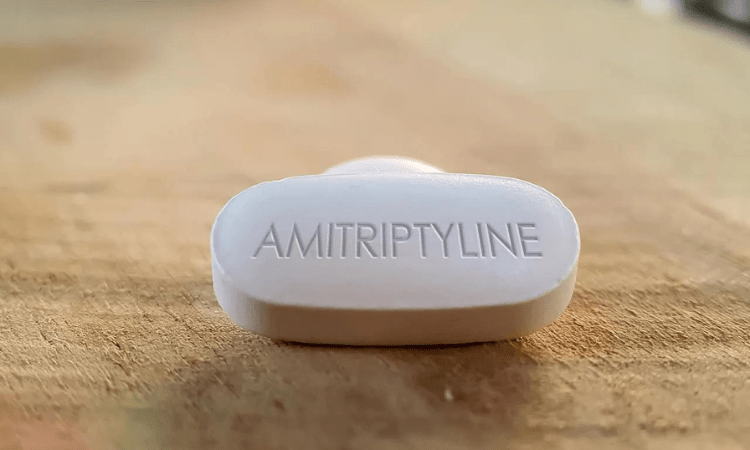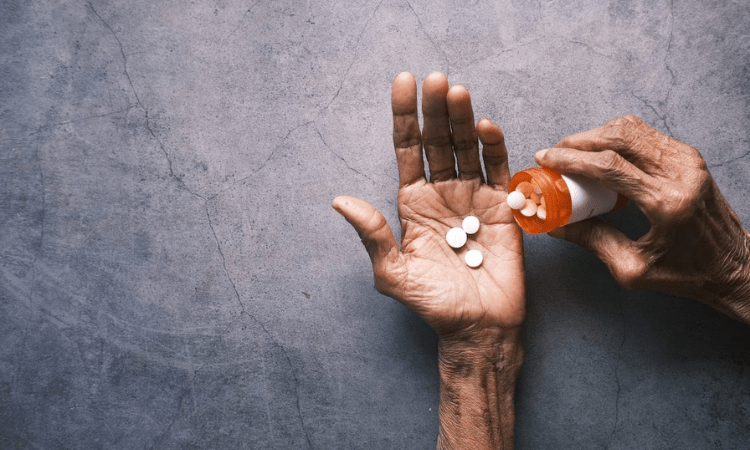Have you ever found yourself saying that you may have ADHD after looking for its symptoms online? Knowing what ADHD is and its types is crucial for starting the diagnosis process. Important is to know where you can look for ADHD Diagnosis.
Believing you have ADHD without a proper diagnosis and tests can cause unnecessary anxiety. You must also know what DSM-V is, which institution publishes it, and how it is used to diagnose ADHD. Today, we will be guiding you through the diagnostic criteria for ADHD as outlined in the DSM-V. By the end of this guide, you should have a firm knowledge of the diagnostic criteria for ADHD.
What is ADHD (Attention Deficit Hyperactivity Disorder)?
ADHD is a common brain disorder where you act impulsively, struggle to focus, and have excessive energy. Doctors usually diagnose it in childhood, but it often lasts until adulthood. Around 4% to 5% of American adults have ADHD.
Researchers and experts have been studying and improving ADHD for 50 years. ADHD was first mentioned in the DSM-II. They described it as a hyper reaction of childhood. DSM-V includes it as a chronic condition with specific symptoms and criteria for kids and adults.
Moving forward, we will be discussing the importance of DSM-V and how ADHD diagnostic criteria fall under it.
Inattention ADHD, also known as ADHD predominantly inattentive type or ADHD-PI, is a subtype of attention-deficit/hyperactivity disorder (ADHD) characterized primarily by symptoms of inattention. These symptoms can significantly impact an individual’s ability to focus, concentrate, and complete tasks.
Inattention ADHD symptoms can affect school, work, and relationships in a person’s life. Some common symptoms include:
1. People with inattention ADHD find it hard to focus, especially on tasks that need mental effort or aren’t interesting. They may become easily distracted by external stimuli or their own thoughts, leading to frequent daydreaming or mind-wandering.
2. Poor organization and time management: People with inattention ADHD may have difficulty organizing their thoughts, belongings, and tasks. They may struggle with planning and prioritizing, often leading to missed deadlines, forgetfulness, and disorganization.
3. Forgetfulness: Forgetfulness is a common symptom of inattention ADHD. Individuals may frequently misplace items, forget appointments or commitments, and have difficulty remembering important details or instructions.
4. People with inattention ADHD struggle to stay focused on tasks that don’t immediately interest or reward them. They start projects with enthusiasm but get bored quickly, leading to incomplete work or a tendency to begin and abandon tasks.
5. Difficulty following instructions: People with inattention ADHD may have difficulty following instructions, especially those with many steps or complex directions. They may have trouble listening attentively and may miss important details or misunderstand instructions.
6. Poor attention to detail: Individuals with inattention ADHD often have difficulty paying attention to details, leading to careless mistakes in schoolwork, work assignments, or other tasks. They may overlook important information or fail to notice errors.
7. People with inattention ADHD may avoid tasks that require a lot of thinking and focus. This is because they have difficulty paying attention for extended periods of time. This can lead to a pattern of procrastination or a tendency to engage in more stimulating activities instead.
Inattention ADHD symptoms can range from mild to severe and may cross-referenced with anxiety or depression symptoms. Inattention ADHD requires a thorough assessment by a medical professional to identify and distinguish it from other causes of attention deficit disorder and difficulty concentrating.
What is DSM-V?
The DSM-V or Diagnostic and Statistical Manual of Mental Disorders, 5th edition, is the official guidebook by the American Psychiatric Association (APA). It is the most recent edition of this manual. The DSM-5® came out in May 2013.
The APA revised the version and released it in March 2022. The new version is called DSM-V-TR™, with TR meaning “text revision.”DSM-V categorizes mental health disorders by shared qualities, such as mood disorders, and provides specific criteria for diagnosis.
DSM-V helps doctors define mental health disorders. It is used by doctors for mental health treatment. Clinicians use this to decide if you have ADHD or not.

DSM-V Criteria for ADHD Diagnosis
DSM-V’s clinical guidelines are an important source for diagnosing ADHD in children, teenagers, and adults. The criteria are so accurate that they help medical practitioners and professionals further identify the type of ADHD you may have depending on the age group you fall into. This makes it easier for them to treat you with the right medication and therapeutic methods.
The DSM-V mentions three types of ADHD. Each type comes with its own set of symptoms and criteria. Let us look at the necessary symptoms that you must have for ADHD to be diagnosed.
- Persistent symptoms for more than or equal to 6 months in more than or equal to two regular settings, e.g., school, workplace, etc.
- Several symptoms of ADHD are present before the age of 12 years.
- Symptoms that do not fall under a specific psychiatric disorder, e.g., anxiety, and do not occur exclusively during a psychotic disorder, e.g., schizophrenia.
After looking at the following ADHD type-specific symptoms, you will be aware of the three following types of ADHD and their respective symptoms. Once you move past this check listing symptoms process, you will find it easier to get your ADHD diagnosed correctly and thus, treated rightly without any complications.
Criteria for ADHD with pre-dominantly Inattentive Type
To get diagnosed with ADHD predominantly inattentive type, you must meet the following five or more symptoms listed in DSM-V if you are an adult, i.e., more than 17 years of age. And if you are a child, i.e., below the age of 17 years, you must meet six or more symptoms.
1. You miss out on small details because of poor attention
You often fail to pay close attention to details or make careless mistakes in schoolwork, at work, or during other activities. For example, you forget to check to capitalize proper nouns in an important presentation.
2. Your attention span often diminishes pretty quickly
You often have difficulty maintaining your attention span in tasks or play activities. For example, you find it hard to stay focused during long reading times or long lectures.
3. You have poor listening skills
You often do not seem to pay attention to the listener when spoken to directly. For example, you are often distracted by something else that is not even physically or present.
4. You lack follow-through
You fail to follow through with the instructions given to you. This results in the failure of your schoolwork, chores, or duties in the workplace. For example, you start tasks impulsively but do not end up completing them because you missed out on important instructions or guidelines.
5. You lack organizational skills
You often have difficulty organizing tasks and activities. For example, your things are often cluttered or you have a hard time presenting your work in an organized manner.
6. You avoid tasks that demand concentration
You often avoid or are reluctant to engage in tasks that require sustained mental effort. You dislike long reports because they require reading and analyzing research papers. You lose things.
You frequently misplace essential items for daily use. For example, house keys, wallets, etc.
7. You are easily distracted
You easily lose focus on random thoughts. For example, your mind seems to wander in a world of its own.
8. You are forgetful
You are often forgetful in daily activities. For example, you forget to pay bills, shop for important groceries, make appointments, etc.
Criteria for ADHD with predominantly for Hyperactive-Impulsive Type
To get diagnosed with ADHD predominantly hyperactive-impulsive type, you must meet the following five or more symptoms listed in DSM-V if you are an adult, i.e., more than 17 years of age. And if you are a child, i.e., below the age of 17 years, you must meet six or more symptoms.
1. You fidget a lot
You often fidget with or tap your hands or feet, you may squirm when seated. For example, you are hyperactive in the sense that you need to keep your body moving in one way or another.
2. You have trouble staying still
You leave your sitting place when you are supposed to remain seated. For example, you leave your seat when an important lecture is going on.
3. You remain restless
You desire to move about when it’s inappropriate or consistent feelings of restlessness that are difficult to control. For example, you wish to move about when your friends are telling you something important.
4. You find it difficult to keep quiet
You are often unable to engage in leisure activities quietly. You may indulge in self-talk or struggle to keep from interjecting or pivoting to more “exciting” activities. For example, you may not be able to enjoy watching a movie on a lazy Sunday because you are so engrossed in talking to yourself and creating scenarios in your head.
5. You are so much “on the go”
You act as if you are “driven by a motor.” For example, you are uncomfortable being still for an extended time like in restaurants with friends or family.
6. You often talk excessively
You talk excessively, so much that you don’t realize the effect it may have on others around you. For example, you may not calm down once you start talking without realizing that you should let others have their turn to speak as well.
7. You impulsively blurt out things
You often blurt out an answer before a question has been completed. You don’t let other people complete their sentences by interrupting or completing their sentences yourself. For example, you get so excited that you don’t let your colleagues or friends complete first and you start speaking because you can’t wait.
8. You have trouble waiting for your turn
You get impatient when it comes to waiting for your turn. For example, you find it a big deal to wait for your appointment.
9. You interrupt or intrude on others
You find it unusual to realize that you interrupt or intrude on others. For example, you eavesdrop on others without realizing that you should not or you use other people’s things without taking their permission.
Criteria for ADHD Combined (Inattentive Type and Hyperactive-Impulsive Type)
To be diagnosed with ADHD combined, you need to meet the criteria for both inattentive and hyperactive-impulsive types.
In order to be classified as ADHD combined, an individual must meet the diagnostic criteria for both an absent-minded and an impulsive type of ADHD.
Now since you know the criteria of all three types of ADHD, it is important to have an information update on Inattentive ADHD Type. Previously, its name was Attention Deficit Disorder (ADD).
However, ADD has now become a redundant psychological term. It was changed to ADHD in the DSM-IV. Since the year 1994, medical practitioners and professionals who use the DSM, have used the term ADHD-I or Inattentive ADHD for this type.
After learning about the types of ADHD and its symptoms, you might start to feel that you are a bad person, or why it happened to you. It is understandable to feel this way and it’s equally necessary to acknowledge this feeling. But it is not something under your control.
There have been no identifiable causes of ADHD. Growing research and studies show evidence of genes being linked to ADHD. However, no genetic combination has been identified for the cause of ADHD.
Thus, it becomes crucial for you to not indulge in self-criticism and seek professional help for the right treatment.
FAQs
How is ADHD diagnosed?
Medical practitioners use DSM-V to check if you have the required number of symptoms to be diagnosed with ADHD. Further, they can use this checklist to see which type of ADHD you may have.
Can you self-diagnose ADHD?
No, you can’t. You may happen to find DSM-V informative to read but you still are not eligible to diagnose yourself with ADHD with no medical and/or psychological background. This is because diagnosing someone with ADHD is not as easy as it may seem.
It requires a long evaluation of your mental conditions, symptoms, health history, and more to determine whether you have ADHD or whether you have a disorder that has symptoms similar to ADHD. Because of this extensive evaluation, self-tests can mislead you. Thus, only a certified medical practitioner can do this.
How can ADHD be treated?
The common treatment of ADHD is a combination of medication and therapy. Medication includes both stimulants and non-stimulants. Stimulant medication is the most effective form of treatment with a responsive rate of 70%-80%.
Stimulant medicines include methylphenidate and amphetamine compounds. Long-acting stimulants help in smoother improvement of symptoms. 10%–30% of patients do not respond adequately to stimulants.
So non-stimulants like atomoxetine, bupropion, and tricyclic antidepressants are thus given. Therapy includes cognitive behavioral therapy (CBT), behavior therapy, and psychotherapy.
Can ADHD be taken care of through self-care practices?
Yes, it is possible to have your ADHD symptoms under control through self-care. This includes practices like
- Maintaining a proper sleep schedule
- Having a diet rich in iron, magnesium, and zinc
- Taking carbohydrate and protein-rich snacks
- Doing frequent exercises to burn extra energy
Conclusion
Reliable professional help will correctly diagnose your ADHD and you will get the right treatment you need. With the right treatment which includes medication and therapy, you will be able to overcome the symptoms of ADHD. We, at Relevance Recovery, constantly work with specialized counselors to help people with ADHD by providing them with personalized treatment.









